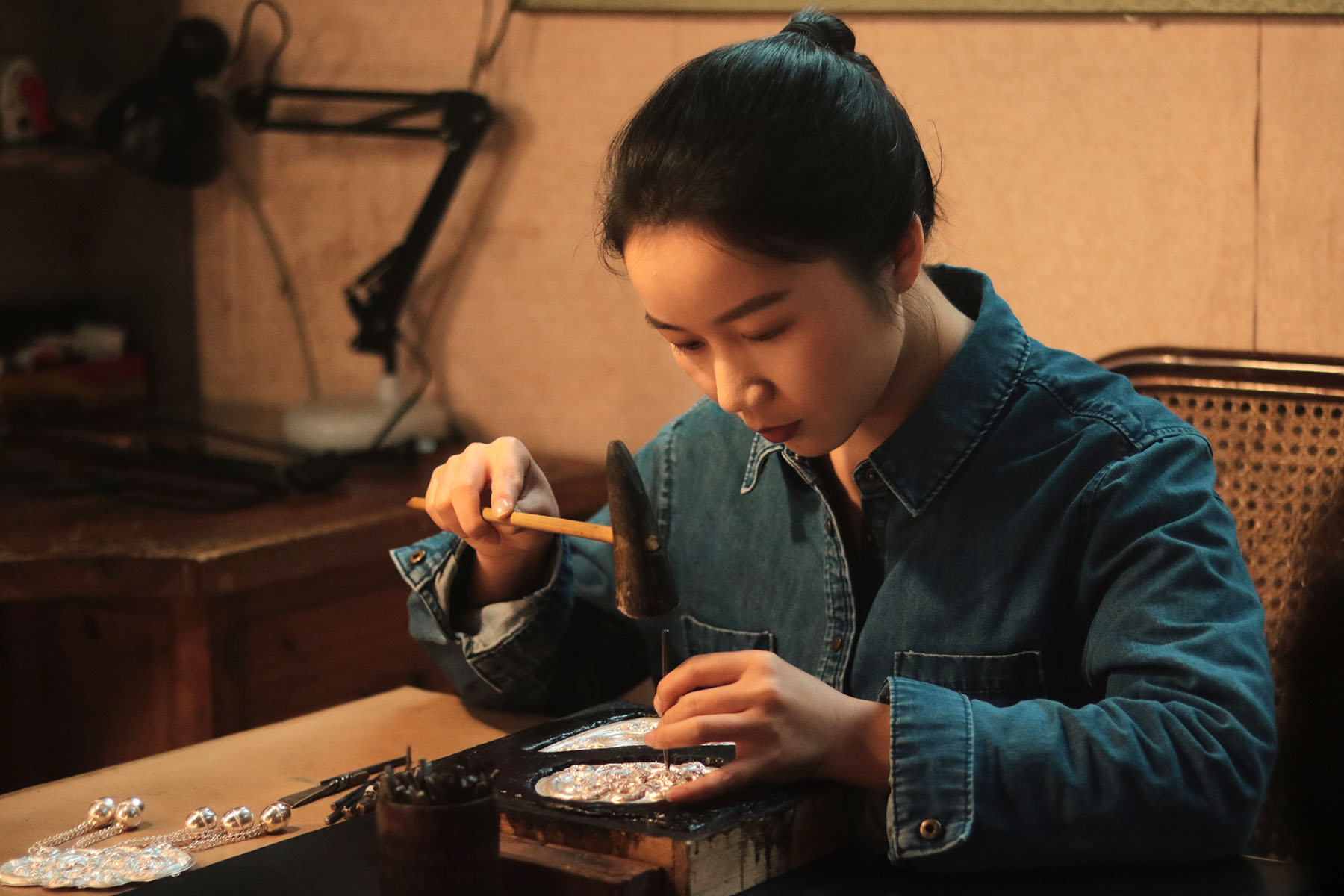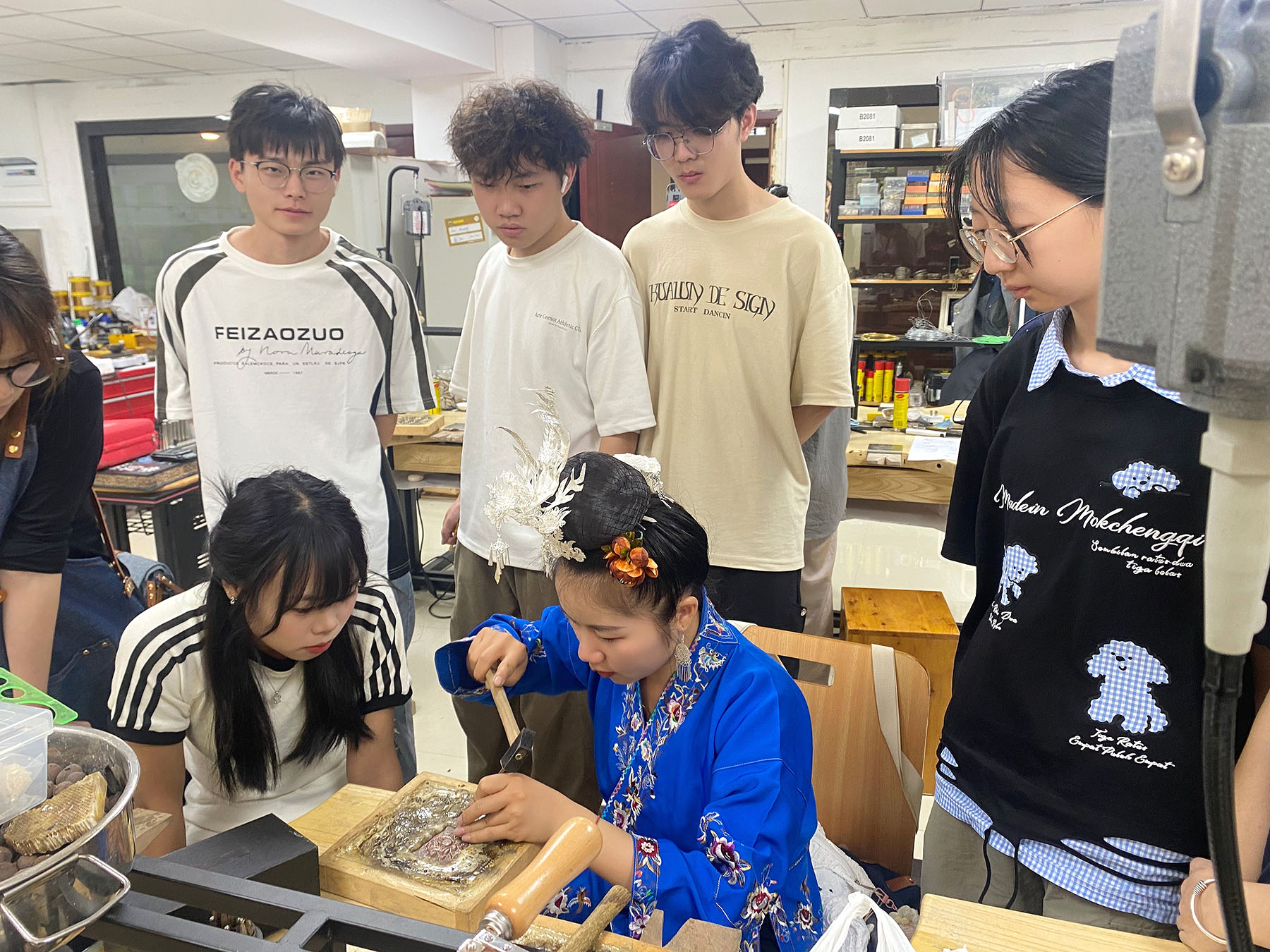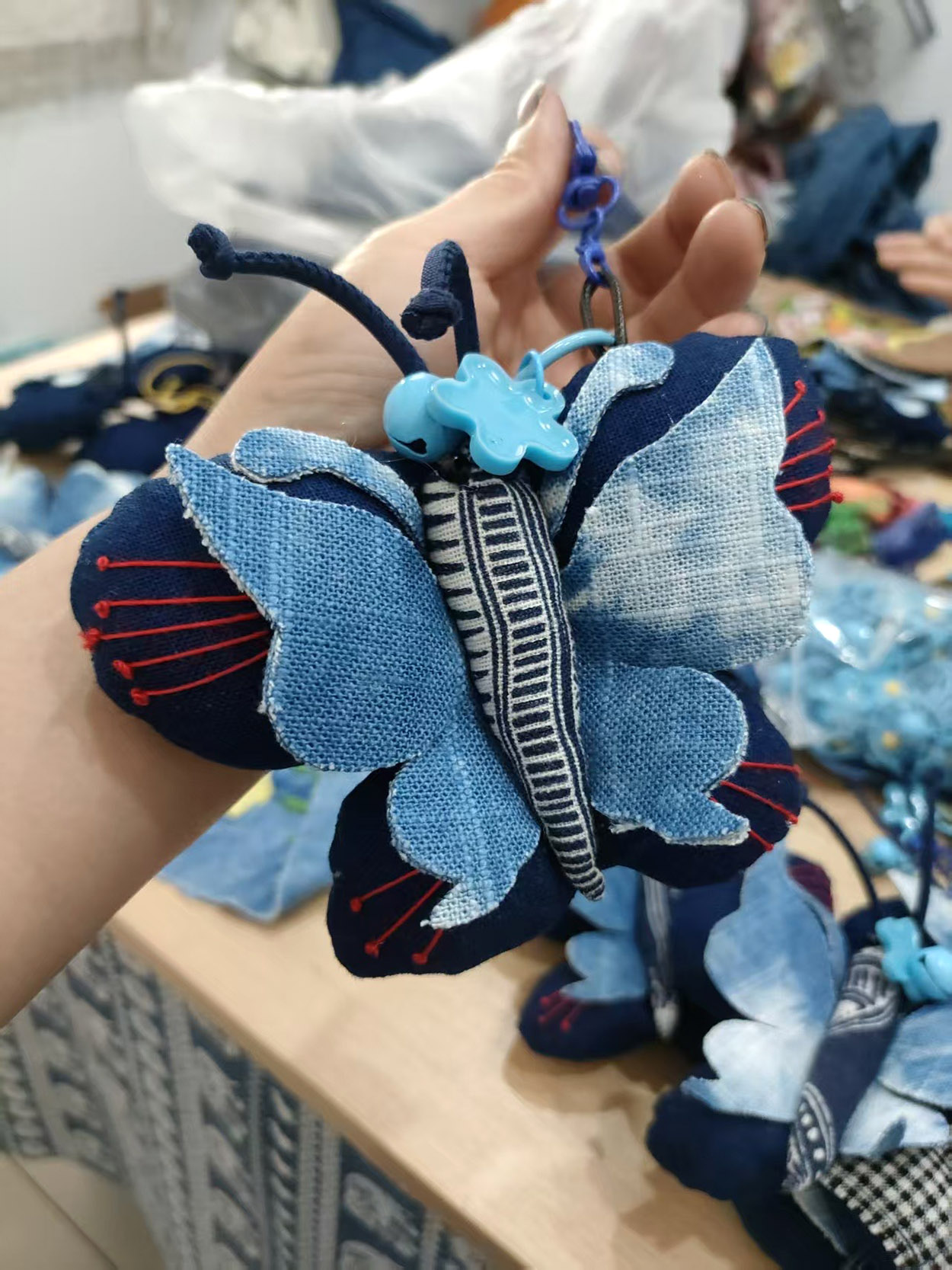Miao artisans use their heritage training to inject vitality into local economies and cultural preservation efforts, Yang Feiyue reports.

When Wan Lanfang stepped into the classroom on a late June afternoon, the silver adorning her body jingled and rustled softly, as if coming to life.
From a headdress blooming with delicately crafted flowers and birds to a sweeping, silver-braided necklace cascading from her neck to her waist, every element reflected meticulous devotion to her ethnic Miao roots.
"If you look closely, you'll see the intricate patterns on my clothes — this is the result of fusing silver with embroidery," Wan explains with quiet pride.
"It shows how silver can be harmoniously integrated with a wide range of traditional and modern materials and crafts," she adds.
As a village Miao girl born and raised in Shibing county of Guizhou's Qiandongnan Miao and Dong autonomous prefecture, Wan made her way to becoming a teacher at the Guizhou Minzu University in Guiyang, Southwest China's Guizhou province, imparting silver crafting knowledge to students.
Over the years, she has pioneered unique and innovative jewelry designs that blend ethnic Miao motifs with traditional embroidery, bamboo weaving, enamel, ceramics, batik, and leather, creating wearable works of art that honor heritage while embracing contemporary aesthetics.
"None of it would have been possible if it weren't for my art masters," says the woman in her 20s, choking up when recalling her arts and crafts pursuit.
READ MORE: Traditional brands use technology to meet modern demand
She tapped into her creative flair in 2021, when she participated in a national training program on silver jewelry forging.
Launched by the Ministry of Culture and Tourism in 2015, the training and capacity-building program aims to enhance the transmission of intangible cultural heritage, or ICH, and further integrate it into modern life.
The initiative coordinates selected educational institutions to organize and carry out training programs focused on traditional craftsmanship and related ICH projects.
This high-level platform exposed Wan to advanced techniques such as intricate gem-setting and enameling, enabling her to better take stock of what she had learned and deliver innovation through ingenious combinations.
After finishing her undergraduate studies in traditional crafts such as embroidery, batik, and ceramics at the School of Fine Arts, Guizhou Minzu University, in 2019, Wan found it was the metallic sheen and intricate craftsmanship of silver jewelry that truly tugged at her heartstrings.

The following year, she moved to Leishan county, where she apprenticed under Yang Guangbin, a national-level representative inheritor of Miao silver jewelry forging.
In the male-dominated world of silver forging, Wan's determination and persistence led Yang to break tradition and accept her as his first female disciple.
Under his guidance, she mastered the essential techniques of Guizhou silver jewelry, including engraving, wire drawing, and forging — laying a solid foundation in traditional craftsmanship.
Determined to deepen her knowledge and upgrade her artistic expression, Wan went on to refine her art theory foundation and expand her artistic vision through a master's degree at Guizhou Minzu University later in 2020, while still visiting Yang on a regular basis to maintain her skills.
In the interim, she signed up for the national training program, which became a pivotal moment in her artistic career.
"It opened my mind as to how modern techniques and traditional silver forging can be combined," she says, adding that she has since aspired to create a new generation of jewelry that remains rooted in the rich cultural heritage of the Miao people while embracing contemporary aesthetics.
To date, Wan's works have received multiple awards, including a gold medal at a provincial tourism product and creative culture design competition and second prize at the Guizhou industrial design competition for jewelry designers, both in 2023.
Wan is among more than 400 art students, ICH inheritors and artisans who have benefited from the national ICH initiative at Guizhou Minzu University over the past nine years.
The School of Fine Arts, as the primary organizer, has successfully delivered 13 high-quality training sessions on traditional crafts such as dyeing, paper-cutting, embroidery, and ethnic costume making, says Chen Mei, who oversees the program's operations at Guizhou Minzu University.
"They are injecting vitality into the local economies and cultural preservation efforts," she notes.

In addition to its own faculty members specializing in relevant arts and crafts, the school has invited national-level ICH inheritors and arts and crafts masters as hands-on instructors.
"Their superb craftsmanship and rich practical insights offer invaluable guidance to trainees," Chen says.
Marketing specialists and cultural innovation designers are also brought in to help trainees gain a deeper understanding of market demands, modern design concepts, and strategies for integrating traditional crafts into contemporary life, she adds.
Before each training session, the university conducts in-depth research, including field visits, surveys, and interviews, to assess the current state of craft inheritance, skill enhancement needs, and industry trends.
"These insights provide a solid foundation for designing training plans," Chen says.
During implementation, classroom lectures blend theory with vivid case studies. Live demonstrations allow trainees to observe techniques firsthand, and field visits immerse participants at heritage sites and industrial bases to experience the connection between ICH, daily life, and contemporary industries.
"The curriculum encourages creative integration across materials, techniques, forms, and functions, cultivating critical thinking and aesthetic sensitivity among trainees," she emphasizes.
Chen Jie, a Miao woman from a village in Guizhou's Qiannan Bouyei and Miao autonomous prefecture, says she owes her entrepreneurship to the ICH training program.
"Before, we had no exposure to design or color theory," says the middle-aged artisan.
Through the training initiative over the past two years, she learned how to enhance and adapt her traditional skills in batik dyeing and embroidery to suit contemporary consumers.
Chen Jie began learning her craft at a young age under the guidance of her grandmother, creating handmade textiles and garments traditionally used as dowries.
"But they just sat in a cabinet, collecting dust and mold," she recalls.

The training program not only helped her improve her craftsmanship but also gave her a deeper understanding of the business side of things.
"In the past, my dyed skirts always turned out too dark and uneven. But now, with the help of my teachers, I've learned how to create beautiful gradient colors and pair colors effectively," the woman in her 40s says.
As she explored ways to transform traditional patterns into small, marketable products like keychains, bags and accessories, Chen Jie became a rising leader in the village's growing craft industry — turning heritage skills into a source of income for herself and others.
"For example, we take local folk stories and make (their plots and characters) into patterns of hanging ornaments. These items are well-received in the market," she says.
She now leads a team of women, mostly stay-at-home mothers, disabled individuals, and rural women, who previously had limited opportunities.
"I have taught my team how to mix colors, follow patterns, and create beautiful designs that are still true to our traditions, but also have modern appeal," she says.
ALSO READ: The true colors of miao
"They can work from home, which has given them a chance to earn an income. I provide them with designs and materials, they complete the work, and I pay them promptly."
Her operation has grown significantly, with a steady team of 30-50 core artisans who specialize in embroidery, batik dyeing, and other craftwork.
In addition, she has five team members who handle the intricate tasks of painting and waxing. These handcrafted items are sold in cities like Guangzhou of Guangdong province, Shanghai and Beijing, as well as local markets throughout her region.
Though the production is still largely handmade and cannot compete with the speed of mechanized methods, her team has achieved a monthly sales volume of 40,000 to 50,000 yuan ($5,576-$6,970).
"Last year, we did quite well … and the orders keep coming in," she says.
"The best part is hearing our workers say, 'As long as we're earning enough to feed our families, we're happy'. For us, that's the most important thing."
Contact the writer at yangfeiyue@chinadaily.com.cn


